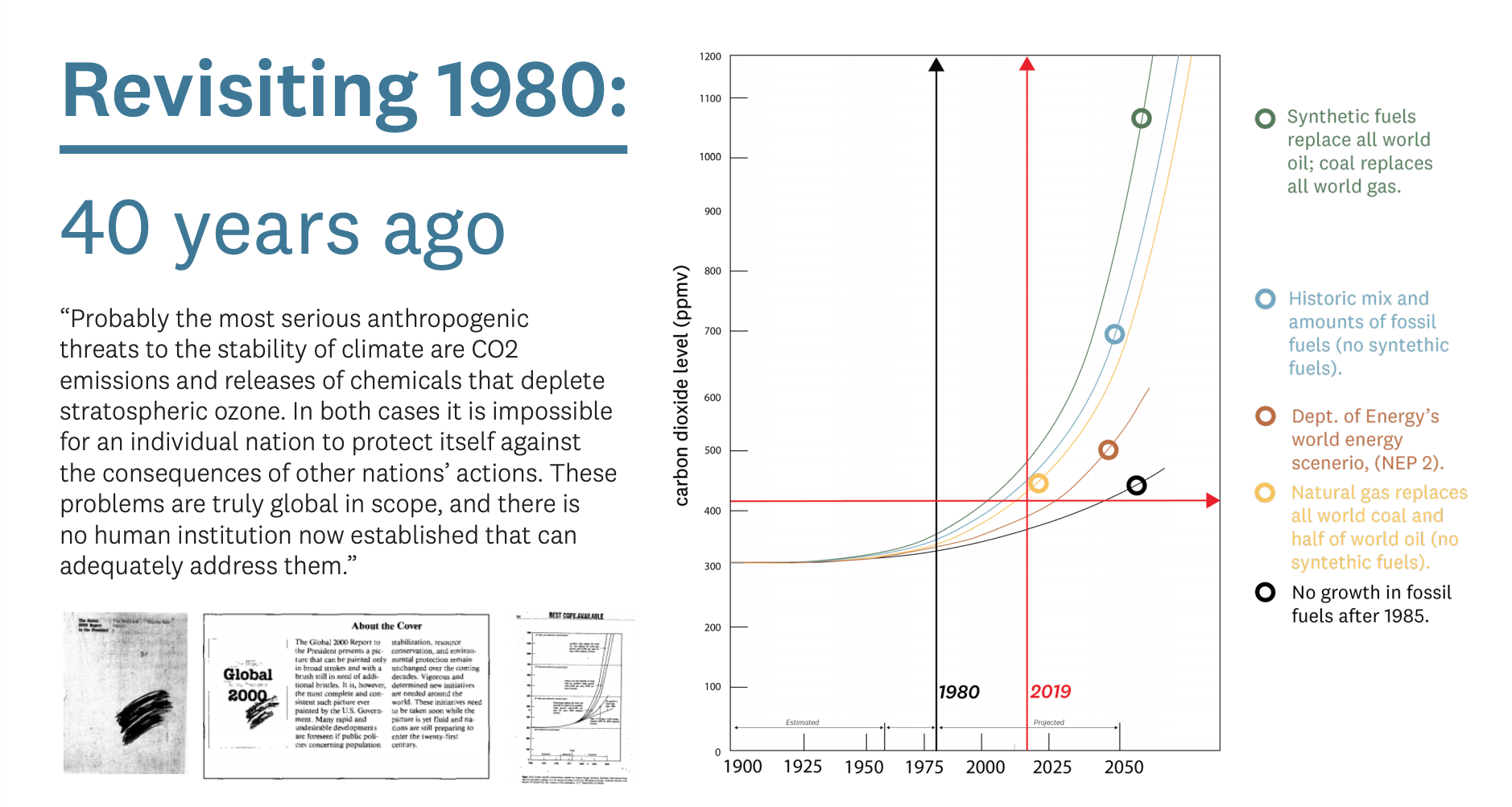On 30 May 2019 the Institute held a public event titled ‘A Point of Vanishing Stability’ at the National Library of New Zealand. Our intention was to explore how New Zealand can respond to the complex challenges posed by climate change. We brought together a variety of speakers to contribute ideas toward a climate strategy for New Zealand that provides an urgent yet considered response to climate change. Falling on the same day as the release of the Wellbeing budget (and the same month as the Just Transition Summit– see our blog for the summit here), we saw the event as an opportunity to build on the dialogue surrounding our climate crisis.
Our recent work on government department strategies (GDSs) and the resulting 2018 GDS Index provided a way to look more deeply at New Zealand’s existing climate change strategy, and in particular, what strategy documents currently are in operation. As an extension of this work, we carried out research into mentions of climate change in these strategic documents. What we found was an alarming lack of climate change integration in government strategy. The diagram far below illustrates our findings from this research.
The outer ring lists all of the operational GDSs as at 31 December 2018 that included the term ‘climate change’. The direct focus area of the strategy wheel (the light grey centre ring) emphasises the lack of a high-level climate strategy for New Zealand. This indicates the need for an integrated climate strategy to operate across all government departments, to provide leadership for organisations and individuals outside of government and to shape New Zealand’s long-term future.This would in turn aid in the development of a reporting framework for New Zealand by providing a strategy to report against. The 30 May event was the Institute’s first attempt to collect ideas about how this gap might be addressed.
Pace Layers Thinking Model
In discussion with Roger Dennis, Wendy selected Stewart Brand’s ‘Pace Layers Thinking Model’ as a framework to discuss the relationship between macro trends and climate change. The upper layers (e.g. fashion, commerce and infrastructure) are components of the system that change quickly and garner a lot of attention, but do not necessarily have much impact on the long term changes in society. In contrast, the lower layers (e.g. culture and nature) change more slowly and get less attention, but when they do, even small changes can have significant impacts on the layers above them. The model seemed particularly appropriate for structuring our discussion because we are now experiencing a time when the bottom layer (nature) is starting to have a significant impact on the way we live our lives. The speakers each focused on a single layer, and the narrative for the evening followed the layers from the top down. The first and last layers were disregarded for the purposes of the discussion as the idea was to have a deeper discussion about the central layers that we need to change in response to the climate crisis.
The model seemed particularly appropriate for structuring our discussion because we are now experiencing a time when the bottom layer (nature) is starting to have a significant impact on the way we live our lives. The speakers each focused on a single layer, and the narrative for the evening followed the layers from the top down. The first and last layers were disregarded for the purposes of the discussion as the idea was to have a deeper discussion about the central layers that we need to change in response to the climate crisis.
The Context
Wendy McGuinness began by setting the context – why the event took place. She explained she had been reading a 1980 Report prepared for President Carter in 1980 looking forward to the year 2000. It was the first computer generated and integrated report and is a fascinating report. However, it also made her angry. In 1980 the authors predicted the increase of carbon in the atmosphere if nothing was done to prevent it. The 1980 graph below has been replicated with the addition of the red lines to denote the actual results today. If governments around the world had acted at that time, climate change would have been averted. Whereas today, we find ourselves in the climate change scenario. We must not make the same mistake in 2019 – we must step up and make hard decisions today.
The Speakers
Commerce Layer: Conal Smith
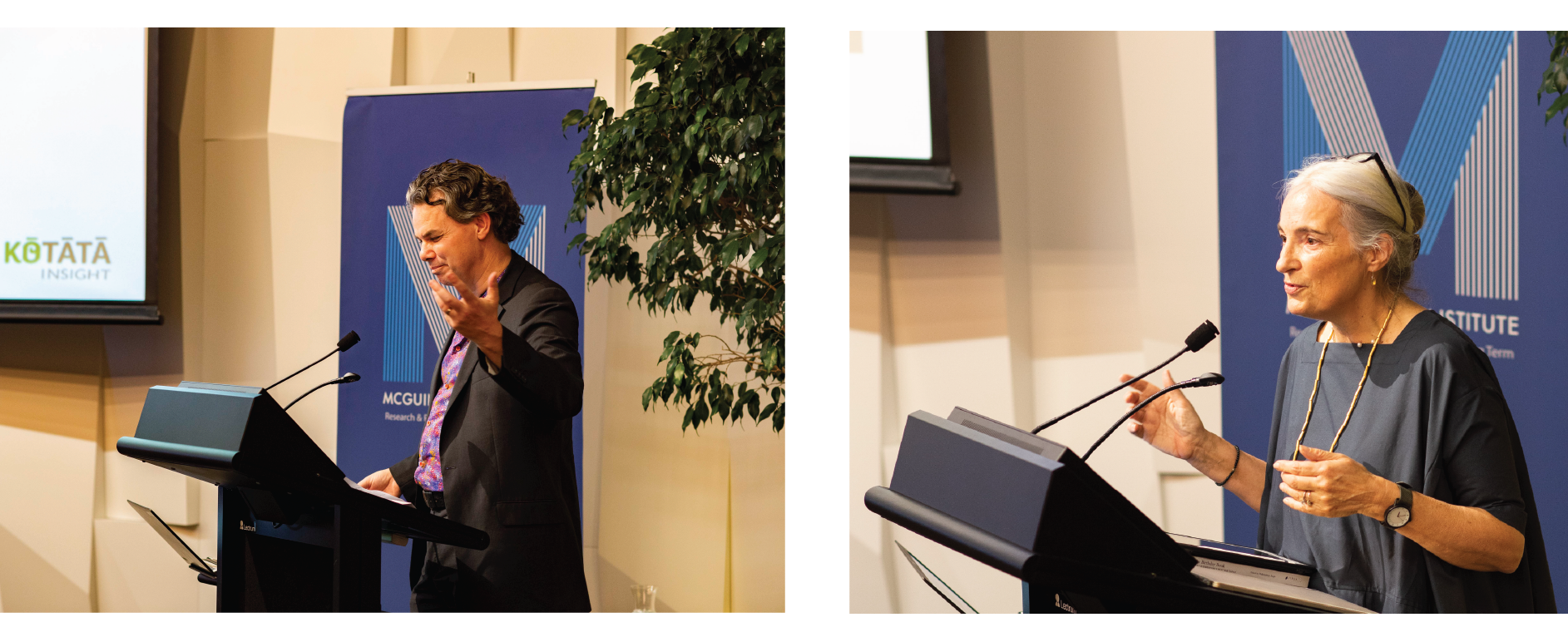
After Wendy introduced the pace layers model, Conal Smith kicked off the panel discussion. As an experienced economist, Conal addressed the issue of climate change from a wellbeing perspective. His insights focused primarily on the major trade-off associated with positive social wellbeing: climate change mitigation and adaptation versus economic growth.
There is a strong connection between wellbeing and resources, which means that the relative gains and losses that result from slowing economic growth in order to improve climate change mitigation and adaptation must be considered. Prioritising mitigating and adapting to climate change over economic growth will have significant effects on both GDP and wellbeing. However, the gains and losses will be asymmetric, meaning that society’s experience of a ‘loss’ from a decrease in GDP will be far less than the experienced ‘loss’ resulting from failure to mitigate or adapt to climate change. This trade-off is better thought of as an intergenerational investment. Slowing economic growth now will improve wellbeing for future generations.
Infrastructure Layer: Dr Anita Wreford and Roger Dennis
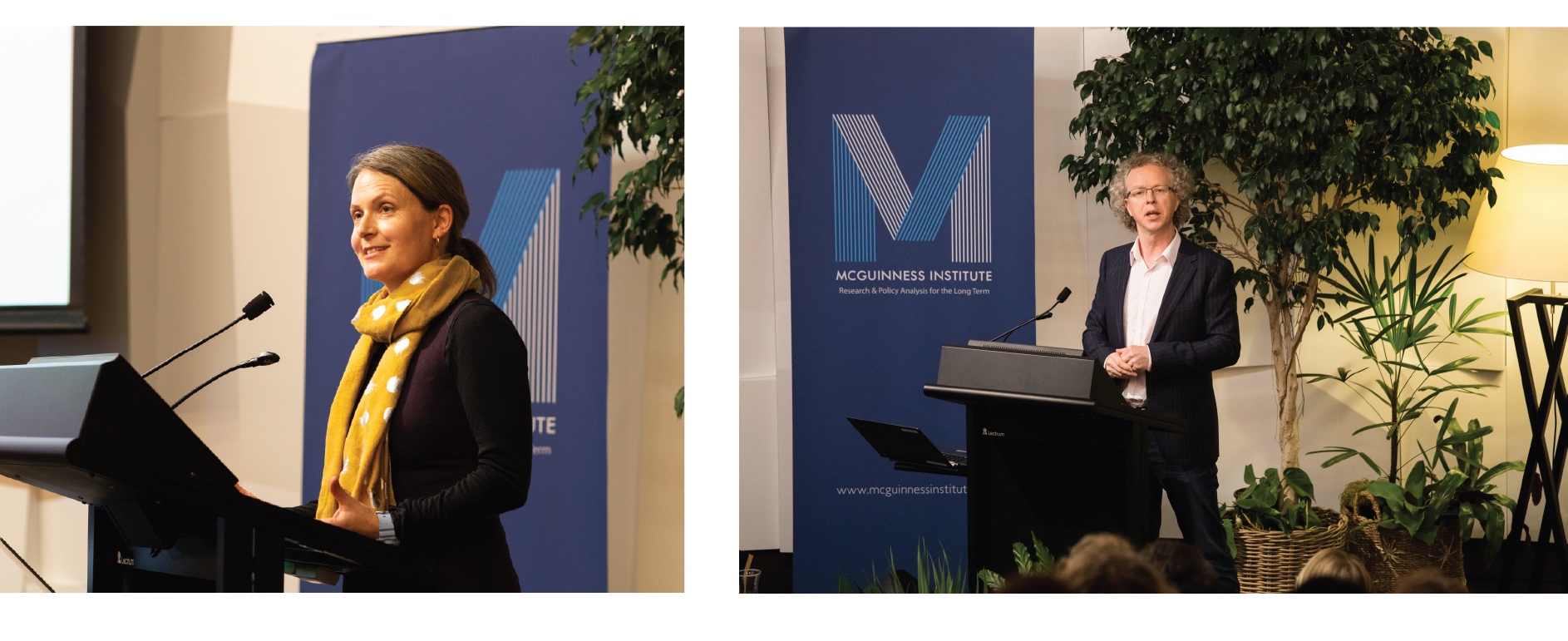
The IPCC report discusses the twofold significance of infrastructure for the transition that will be necessary to manage the impacts of climate change. The significance is firstly in terms of existing infrastructure that is vulnerable to the physical risks of climate change and secondly in terms of the opportunities that arise to develop smart, resilient, green and adaptive cities/infrastructure.
It is clear that emission reduction and preparation for the impacts of climate change need to happen across all sectors of the economy. Current climate change discourse often focuses on how costly this type of adaptation will be for businesses and the economy as a whole. However, this is not balanced with the costs and impacts of not taking action to deliver change.
During the infrastructure section of the panel, both speakers emphasised cost and timing as the key factors that will generate a successful transition. The sooner we act, the better off we will be. Delayed action will result in a more expensive, less opportunistic, and less resilient future that will not adequately prepare us for climate change risks. Alternatively, with well thought-through and timely solutions we can benefit from the opportunities presented by the transition. Anita particularly touched on the infrastructure challenge, asserting the importance of thinking optimistically about the opportunities.
Throughout the discussion around infrastructure it became clear that it is imperative to support decision-making under such times of uncertainty. In practice, this will require stronger cost/benefit analysis of the impacts of action as opposed the impacts of inaction. The way we view, plan and build infrastructure needs to be flexible. What we build today will hopefully be around for decades, meaning we cannot afford to build infrastructure that will be unsuitable for future climates. To provide context to this point, Roger used Punakaiki of the West Coast of New Zealand as an example of a region where the effects of climate change are already having an impact on vulnerable infrastructure. The reality of continuing to re-build damaged infrastructure is that it is now a temporary solution to a worsening problem. In areas such as the West Coast, there is a need to address how this reality is being received by both members of the public and local authorities. Currently, there is a lack of understanding around what this means for low-lying coastal communities.
Governance Layer: Adrian Orr, Chlöe Swarbrick, and Carwyn Jones
The governance section experts shared perspectives of how climate change impacts our financial and political systems and how Te Tiriti o Waitangi may be able to provide solutions to some of these issues.
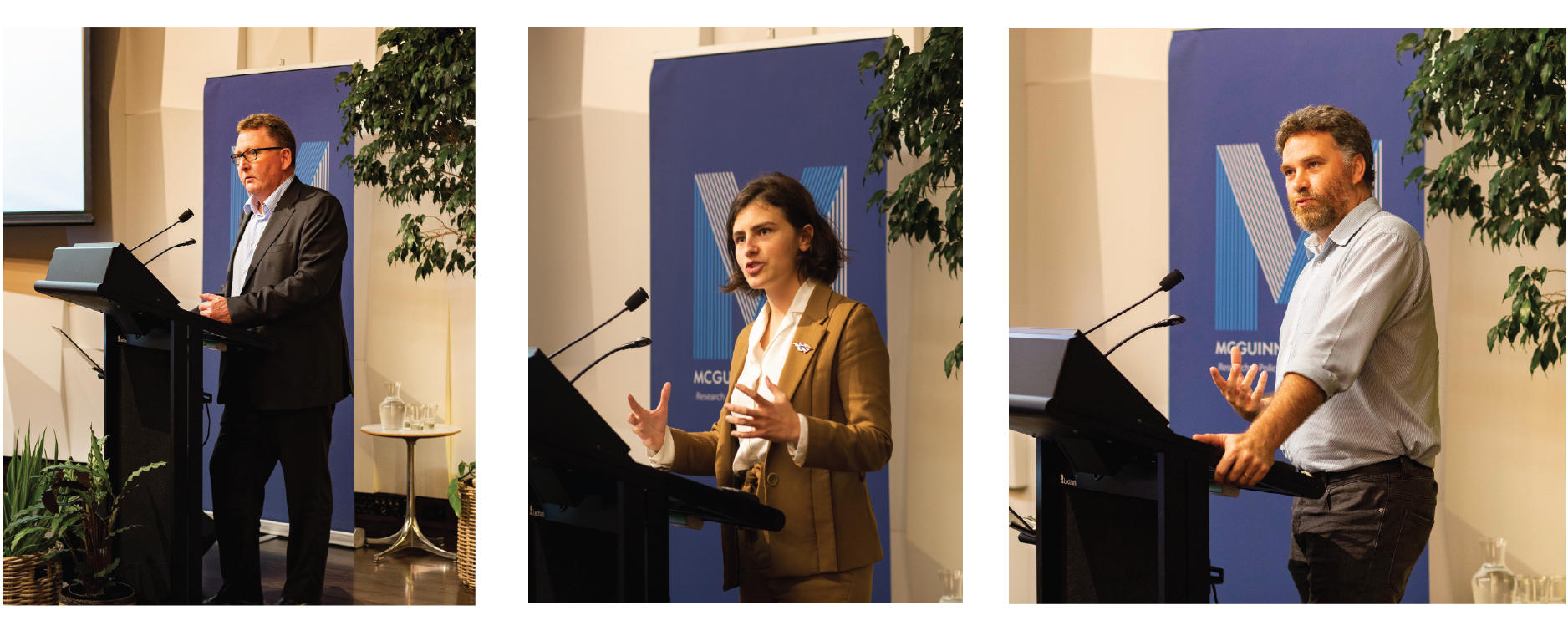 As the Governor of the Reserve Bank of New Zealand and a representative of the wider financial market, Adrian provided insight into the ways that climate change has both impacts on and opportunities for financial markets. We were reminded that the fundamental role of the Reserve Bank of New Zealand is to promote prosperity and wellbeing to ensure a sustainable and productive economy. On this premise, an efficient financial system that achieves and maintains financial stability is crucial to everyday life. We are at a point now where climate change poses a major threat to the stability of financial markets and this has significant impacts that flow throughout the whole economy.
As the Governor of the Reserve Bank of New Zealand and a representative of the wider financial market, Adrian provided insight into the ways that climate change has both impacts on and opportunities for financial markets. We were reminded that the fundamental role of the Reserve Bank of New Zealand is to promote prosperity and wellbeing to ensure a sustainable and productive economy. On this premise, an efficient financial system that achieves and maintains financial stability is crucial to everyday life. We are at a point now where climate change poses a major threat to the stability of financial markets and this has significant impacts that flow throughout the whole economy.
Interestingly, the financial market is well equipped to measure and prepare for future events. In particular, financial discounting provides a mechanism whereby climate risks can be incorporated into current market price. Financial discounting refers to the process of converting future costs and benefits into present value, to see if investments will remain profitable in the future. Climate change risk is taken very seriously in the financial market because of its widespread impacts for consumers, investors and insurers. While financial stability is threatened by the physical risks of climate change, financial systems also have an important role to play in dealing with the transitional aspect of adaptation. Adrian discussed how relative prices have been shifting to include the impact that climate change has and will continue to have on investment. We are currently seeing an ‘investor revolution’, where the demand for asset price to accurately consider any and all risks is at an all-time high. By pricing such risks into assets, strong relative price drivers are developed and in turn, will have influence over social behaviour.
From a political perspective on governance, Chlöe spoke on the importance of systemic design when trying to solve massive problems like climate change. In order to get anything done and build constructive ways forward, there needs to be consensus across all of government. However, this is challenged by the constant feedback loop that politics is stuck in. The nature of three-year election cycles, lobbying, and funding allocation make long-term policy difficult to implement and maintain. This leads to low trust and hope in politicians and the respective institutions that are responsible for delivering the necessary change. The reality is that the current political system is not fit to solve such complex, long-term issues. Chlöe shared her thoughts on the type of political system that is able to handle such issues. This type of system would build on four key principles: ecological wisdom (resources are finite), social responsibility (fair and just distribution of resources), appropriate decision making and non-violence (diversity, cultural acceptance, etc).
Carwyn addressed governance from a broader perspective and discussed ways that Māori values from Te Tiriti o Waitangi could be incorporated to promote and push further aspects of good decision making. He emphasised balancing the needs of people with the needs of the environment – of which we are all dependent. An interesting view around problem solving was raised – that existing problems struggle to be solved through existing tools. Like Chlöe, this point emphasises that the current system is not working, and a paradigm shift is needed. It is vital to provide a new set of tools that accurately represent the diverse requirements for solving complex issues. Greater Māori participation and incorporation of Māori values such as kaitiakitanga would diversify the ways in which we address issues around governance.
Carwyn also briefly touched on consumer culture and discussed how the fossil fuel industry has major influence in blocking or delaying public policy decision making. He continued by explaining how major influence from industrial powers for decision making is nothing new, we have seen it before from the tobacco industry. We need to undertake cultural change from a consumption level to remove the social licence of industries that impact on decision-making and governance. His closing remarks were around the importance to diverge away from the status quo and embed the environment into all law and policy decisions. We must cease to perpetuate a system that ignores aspects of good decision making for all New Zealanders, those alive today and those yet to be born.
Culture Layer: Dame Dr Claudia Orange, Aaron Maniam
To conclude the panel were two speeches structured around the cultural layer of making change. The culture layer of the Pace Layer Thinking model lies just above nature and is by far the most difficult to shift. Both speakers assured the audience that change can start off small; in the words of Dame Claudia Orange, ‘anyone can make change when you put some effort in’.
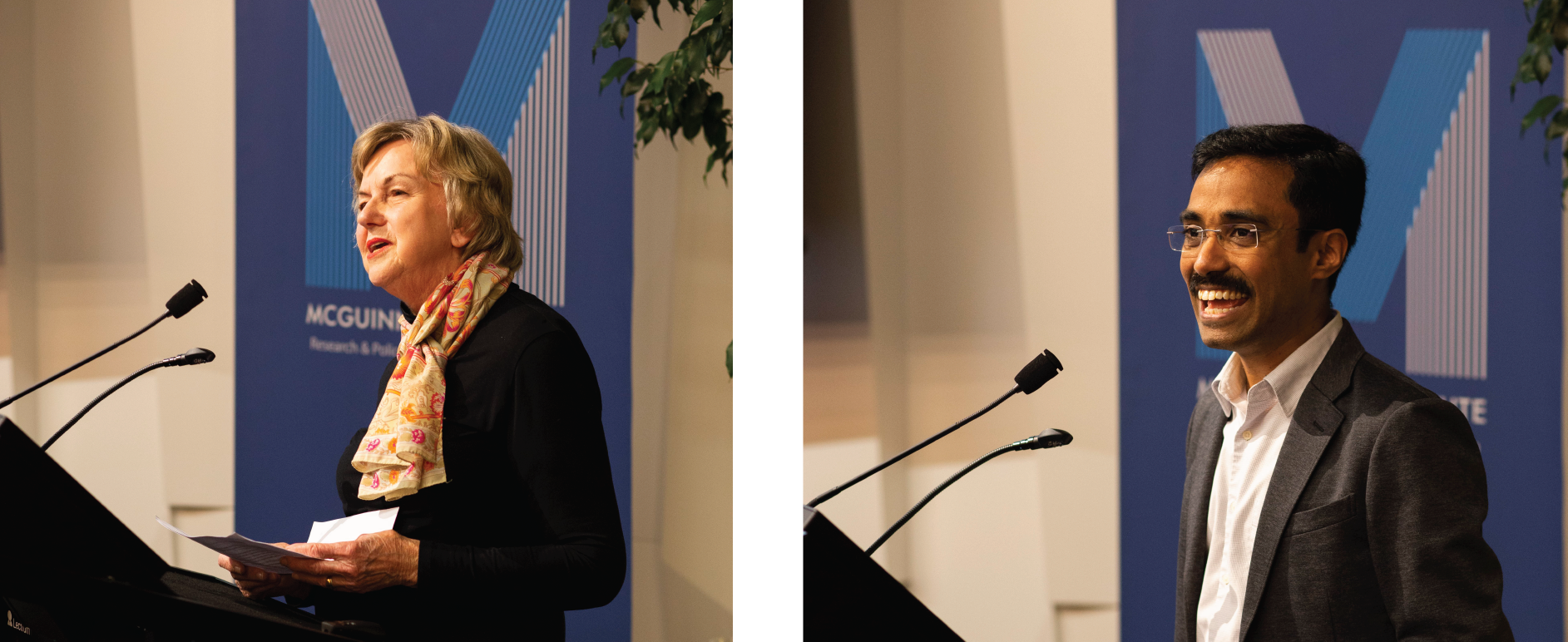
Dame Claudia spoke on her role in the revolutionary change in attitude in New Zealand through the 1975 establishment of the Waitangi Tribunal. It was evident in her speech that the key to changing minds and relations was time; in the case of the Waitangi Tribunal, it took 40 years. Herein lies one of the biggest challenges of climate change; we do not have time. Dame Claudia reminded us that it is possible to influence climate change with a political will, a strategy and a vision. From this presentation, we were encouraged by the idea that anyone can make change when you put some effort in.
Aaron Maniam, the final speaker for the evening, gave the audience lessons from fasting (he was participating in Ramadan on the day of the presentation) which started a dialogue around shifting consciousness. This discussion grew outward from the self, to realising relations and helping others and seeing yourself as part of a wider ecosystem. From this point, Aaron’s presentation examined how to move away from being analytical to having agency in your actions. The conversation rounded off with how we can explore shifting from exchange mindset to gift mindset, to give the idea of being a part of something bigger, and finally, taking small steps towards a larger goal.
Attendee Poll
The Institute also undertook a poll of attendees: How important do you think it is for New Zealand to have a multi-sector climate change strategy? This information will be used to shape the McGuinness Institute’s attempt at a climate change strategy for New Zealand. We hope to publish this report later this year. The results are as follows:
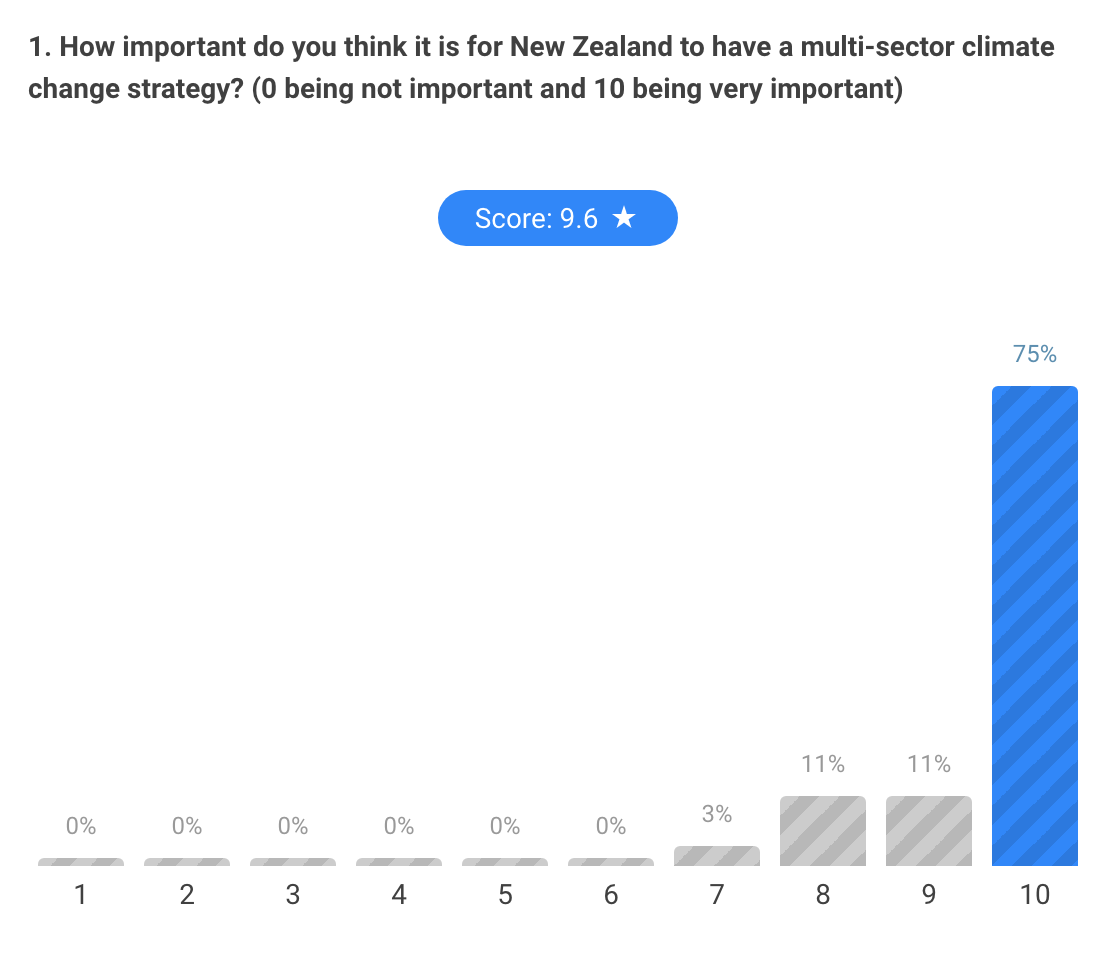
New Zealand’s Existing Climate Strategy Wheel
New Zealand does not have a multi-sector climate change strategy. What we do have is illustrated in the diagram below.
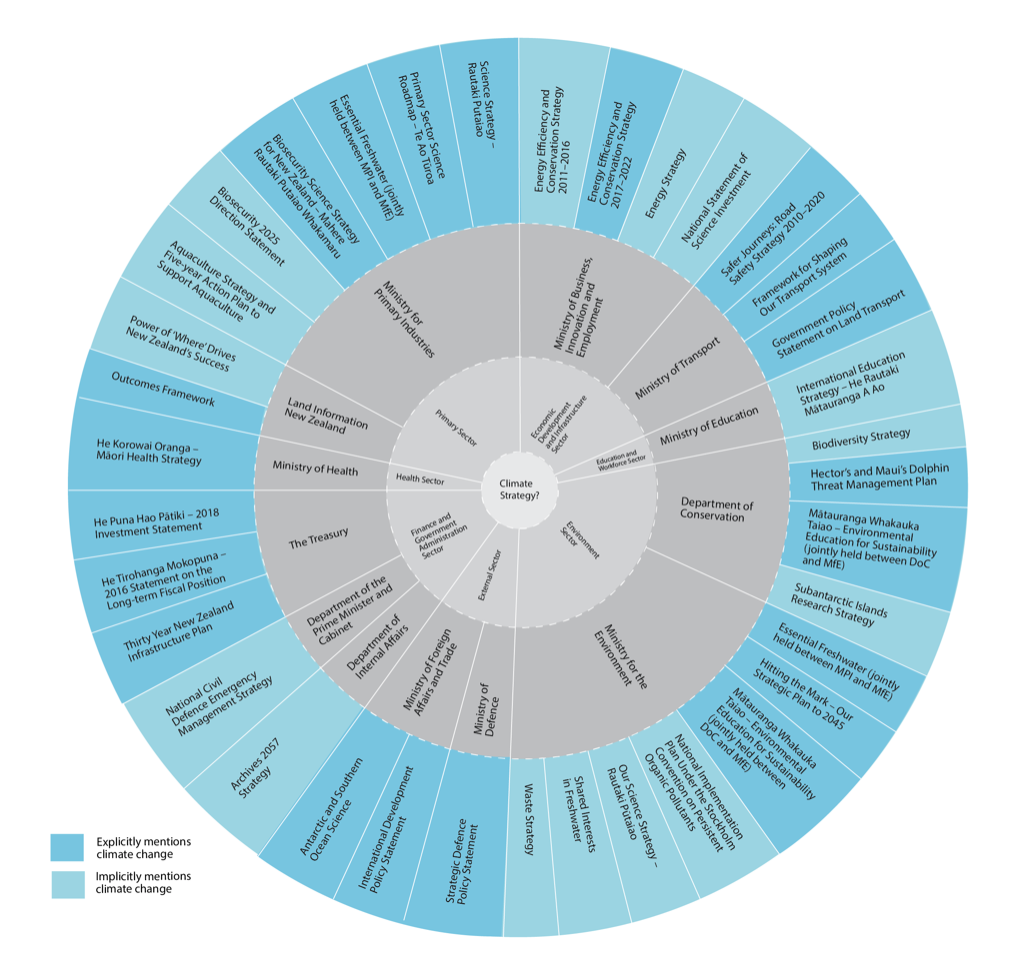
What Next?
The Institute will continue to work in the climate change space – we see it as urgent and important. It is the most important issue facing humankind today. In addition to welcoming your feedback on a climate change strategy for New Zealand, we are also undertaking two events that might be of interest.
Launch of the Climate Change Reporting Discussion Paper
(12.15 – 1.30pm, Tuesday, 25 June 2019)
This lunchtime discussion event will provide the opportunity for interested parties to gather and share their insights about the landscape of climate reporting in New Zealand. The event will be structured around the launch of the Institute’s upcoming Discussion Paper 2019/01 – Designing a Climate Reporting Framework for New Zealand. Learn more here.
KiMuaNZ: Exploring Climate Futures Workshop – Finale Presentation at Government House
(5.30 – 8.30pm, Wednesday, 3 July 2019)
Join us at Government House to hear 36 young New Zealanders share their ideas after three days of listening to expert speakers and developing scenarios. This workshop will focus on exploring different future scenarios and strategies within a climate changing world.
Acknowledgments
Many thanks to the all the speakers, MI and National Library staff, Mark Beatty (photographer), League of Live Illustrators, attendees and everyone else who made the event possible. We are delighted that we were able to facilitate this discussion to crowdsource as many different ideas and thoughts as we did. The challenge is now to bring this work together in such a way that contributes to the wider conversation. The outputs from this event will help shape the Institute’s attempt at a climate change strategy for New Zealand (ideally published later this year).
For anyone that missed it, the whole event was filmed by the National Library and will be uploaded to our YouTube channel in the coming weeks. Alternatively, the event was live streamed to our Facebook page and can be viewed in its entirety here. You can find the PowerPoint presentation here.

